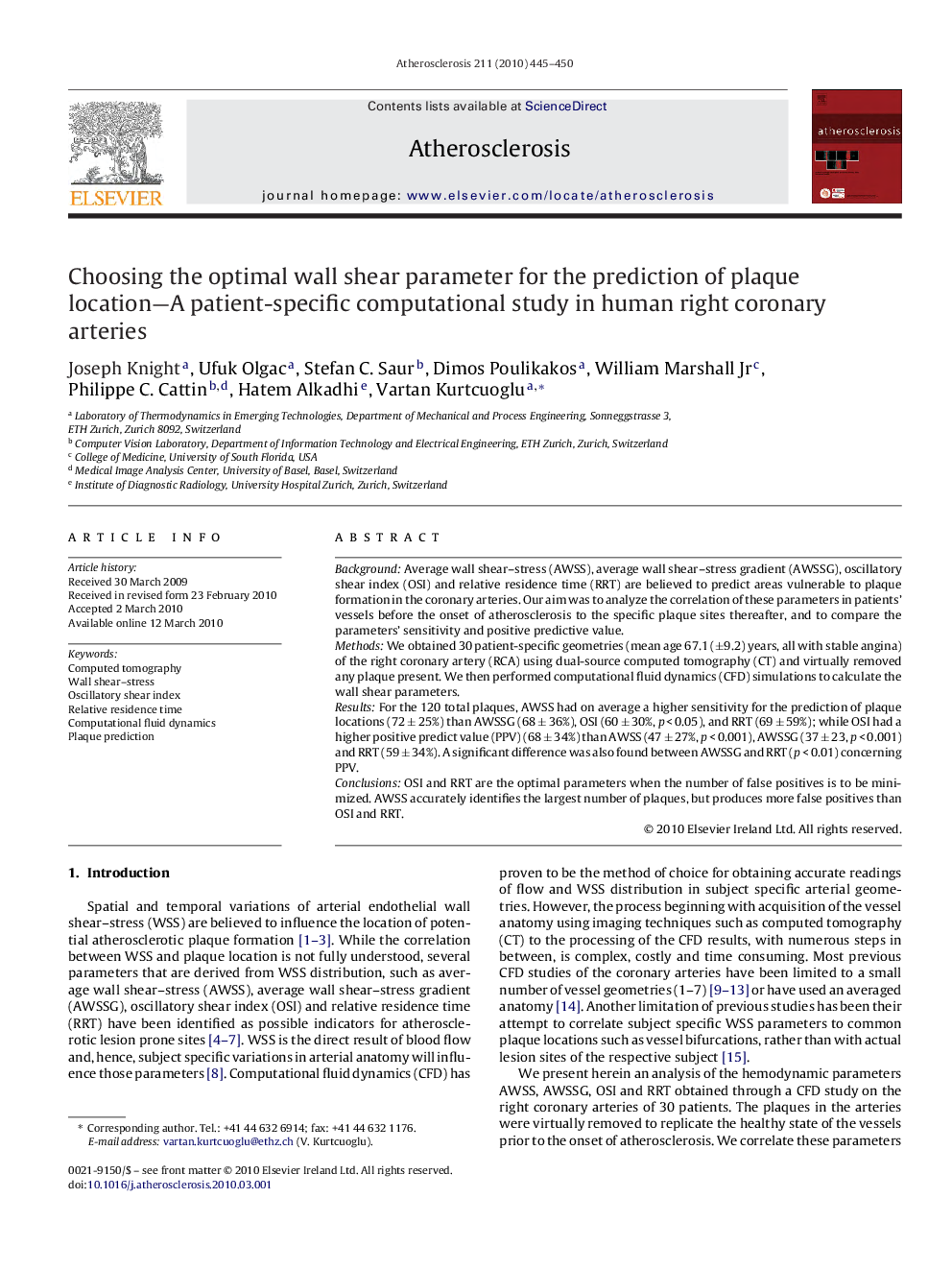| Article ID | Journal | Published Year | Pages | File Type |
|---|---|---|---|---|
| 2893097 | Atherosclerosis | 2010 | 6 Pages |
BackgroundAverage wall shear–stress (AWSS), average wall shear–stress gradient (AWSSG), oscillatory shear index (OSI) and relative residence time (RRT) are believed to predict areas vulnerable to plaque formation in the coronary arteries. Our aim was to analyze the correlation of these parameters in patients’ vessels before the onset of atherosclerosis to the specific plaque sites thereafter, and to compare the parameters’ sensitivity and positive predictive value.MethodsWe obtained 30 patient-specific geometries (mean age 67.1 (±9.2) years, all with stable angina) of the right coronary artery (RCA) using dual-source computed tomography (CT) and virtually removed any plaque present. We then performed computational fluid dynamics (CFD) simulations to calculate the wall shear parameters.ResultsFor the 120 total plaques, AWSS had on average a higher sensitivity for the prediction of plaque locations (72 ± 25%) than AWSSG (68 ± 36%), OSI (60 ± 30%, p < 0.05), and RRT (69 ± 59%); while OSI had a higher positive predict value (PPV) (68 ± 34%) than AWSS (47 ± 27%, p < 0.001), AWSSG (37 ± 23, p < 0.001) and RRT (59 ± 34%). A significant difference was also found between AWSSG and RRT (p < 0.01) concerning PPV.ConclusionsOSI and RRT are the optimal parameters when the number of false positives is to be minimized. AWSS accurately identifies the largest number of plaques, but produces more false positives than OSI and RRT.
